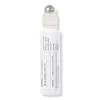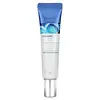What's inside
What's inside
 Key Ingredients
Key Ingredients

 Benefits
Benefits

 Concerns
Concerns

 Ingredients Side-by-side
Ingredients Side-by-side

Water
Skin ConditioningPropanediol
SolventGlycerin
HumectantPentylene Glycol
Skin ConditioningAlgin
MaskingAlpha-Glucan Oligosaccharide
CleansingAmmonium Acryloyldimethyltaurate/Vp Copolymer
Ascorbic Acid
AntioxidantCI 77120
Cosmetic ColorantBisabolol
MaskingButylene Glycol
HumectantCaffeine
Skin ConditioningCamellia Sinensis Leaf Extract
AntimicrobialCaprylyl Glycol
EmollientCellulose
AbsorbentChamomilla Recutita Flower Extract
MaskingChenopodium Quinoa Seed Extract
Skin ConditioningChlorella Vulgaris Extract
Skin ConditioningCitric Acid
BufferingCoffea Arabica Seed Extract
MaskingCoffea Robusta Seed Extract
Skin ConditioningCrataegus Monogyna Flower Extract
Skin ConditioningCucumis Sativus Fruit Extract
EmollientDisodium Phosphate
BufferingEthylhexylglycerin
Skin ConditioningGlyceryl Acrylate/Acrylic Acid Copolymer
HumectantGlyceryl Polyacrylate
Helianthus Annuus Seed Oil
EmollientHydrolyzed Sodium Hyaluronate
Skin ConditioningHydroxyethylcellulose
Emulsion StabilisingJasminum Sambac Flower Extract
MaskingJojoba Esters
EmollientLactic Acid
BufferingLactobacillus
Skin ConditioningLactobacillus/Arundinaria Gigantea Ferment Filtrate
Skin ConditioningLaminaria Digitata Extract
Skin ProtectingLecithin
EmollientLeuconostoc/Radish Root Ferment Filtrate
AntimicrobialLonicera Caprifolium Flower Extract
PerfumingLonicera Japonica Flower Extract
Skin ConditioningMaltodextrin
AbsorbentMaris Aqua
HumectantMica
Cosmetic ColorantPhenethyl Alcohol
MaskingPolyglyceryl-3 Diisostearate
EmulsifyingPolymnia Sonchifolia Root Juice
Skin ConditioningPotassium Phosphate
BufferingPullulan
Saccharide Isomerate
HumectantSalvia Hispanica Seed Oil
MoisturisingSerine
MaskingSilica
AbrasiveSodium Carboxymethyl Beta-Glucan
CleansingSodium Hyaluronate
HumectantSodium Polyacrylate
AbsorbentTetrasodium Glutamate Diacetate
Titanium Dioxide
Cosmetic ColorantTocopherol
AntioxidantTrehalose
HumectantUrea
BufferingYogurt
Skin ProtectingYogurt Powder
Zingiber Officinale Root Extract
MaskingBenzyl Alcohol
PerfumingPhenoxyethanol
PreservativePotassium Sorbate
PreservativeSodium Benzoate
MaskingWater, Propanediol, Glycerin, Pentylene Glycol, Algin, Alpha-Glucan Oligosaccharide, Ammonium Acryloyldimethyltaurate/Vp Copolymer, Ascorbic Acid, CI 77120, Bisabolol, Butylene Glycol, Caffeine, Camellia Sinensis Leaf Extract, Caprylyl Glycol, Cellulose, Chamomilla Recutita Flower Extract, Chenopodium Quinoa Seed Extract, Chlorella Vulgaris Extract, Citric Acid, Coffea Arabica Seed Extract, Coffea Robusta Seed Extract, Crataegus Monogyna Flower Extract, Cucumis Sativus Fruit Extract, Disodium Phosphate, Ethylhexylglycerin, Glyceryl Acrylate/Acrylic Acid Copolymer, Glyceryl Polyacrylate, Helianthus Annuus Seed Oil, Hydrolyzed Sodium Hyaluronate, Hydroxyethylcellulose, Jasminum Sambac Flower Extract, Jojoba Esters, Lactic Acid, Lactobacillus, Lactobacillus/Arundinaria Gigantea Ferment Filtrate, Laminaria Digitata Extract, Lecithin, Leuconostoc/Radish Root Ferment Filtrate, Lonicera Caprifolium Flower Extract, Lonicera Japonica Flower Extract, Maltodextrin, Maris Aqua, Mica, Phenethyl Alcohol, Polyglyceryl-3 Diisostearate, Polymnia Sonchifolia Root Juice, Potassium Phosphate, Pullulan, Saccharide Isomerate, Salvia Hispanica Seed Oil, Serine, Silica, Sodium Carboxymethyl Beta-Glucan, Sodium Hyaluronate, Sodium Polyacrylate, Tetrasodium Glutamate Diacetate, Titanium Dioxide, Tocopherol, Trehalose, Urea, Yogurt, Yogurt Powder, Zingiber Officinale Root Extract, Benzyl Alcohol, Phenoxyethanol, Potassium Sorbate, Sodium Benzoate
Water
Skin ConditioningGlycereth-26
HumectantGlycerin
HumectantDimethicone
EmollientDipropylene Glycol
HumectantNiacinamide
SmoothingPentaerythrityl Tetraisostearate
EmollientSea Water
HumectantTrehalose
HumectantCyclopentasiloxane
EmollientAmmonium Acryloyldimethyltaurate/Vp Copolymer
Squalane
EmollientSodium Hyaluronate
HumectantHydrolyzed Collagen
EmollientVegetable Amino Acids
Skin ConditioningOat Amino Acids
Skin ConditioningButylene Glycol
HumectantDimethicone/Vinyl Dimethicone Crosspolymer
Skin ConditioningDimethiconol
EmollientHydroxyethyl Acrylate/Sodium Acryloyldimethyl Taurate Copolymer
Emulsion StabilisingPolysorbate 60
EmulsifyingCarbomer
Emulsion StabilisingArginine
MaskingEthylhexylglycerin
Skin Conditioning1,2-Hexanediol
Skin ConditioningHydroxyacetophenone
AntioxidantAdenosine
Skin ConditioningDisodium EDTA
Parfum
MaskingHexyl Cinnamal
PerfumingCitronellol
PerfumingGeraniol
PerfumingAlpha-Isomethyl Ionone
PerfumingLinalool
PerfumingLimonene
PerfumingWater, Glycereth-26, Glycerin, Dimethicone, Dipropylene Glycol, Niacinamide, Pentaerythrityl Tetraisostearate, Sea Water, Trehalose, Cyclopentasiloxane, Ammonium Acryloyldimethyltaurate/Vp Copolymer, Squalane, Sodium Hyaluronate, Hydrolyzed Collagen, Vegetable Amino Acids, Oat Amino Acids, Butylene Glycol, Dimethicone/Vinyl Dimethicone Crosspolymer, Dimethiconol, Hydroxyethyl Acrylate/Sodium Acryloyldimethyl Taurate Copolymer, Polysorbate 60, Carbomer, Arginine, Ethylhexylglycerin, 1,2-Hexanediol, Hydroxyacetophenone, Adenosine, Disodium EDTA, Parfum, Hexyl Cinnamal, Citronellol, Geraniol, Alpha-Isomethyl Ionone, Linalool, Limonene
 Reviews
Reviews

Ingredients Explained
These ingredients are found in both products.
Ingredients higher up in an ingredient list are typically present in a larger amount.
Ammonium Acryloyldimethyltaurate/Vp Copolymer (let's call it AAVC for short) is a synthetically created polymer. It's used as a film-forming agent and used to thicken the consistency of products.
AAVC is able to increase the consistency and viscosity of products due to its large molecule size. It also prevents ingredients from separating.
Butylene Glycol (or BG) is used within cosmetic products for a few different reasons:
Overall, Butylene Glycol is a safe and well-rounded ingredient that works well with other ingredients.
Though this ingredient works well with most skin types, some people with sensitive skin may experience a reaction such as allergic rashes, closed comedones, or itchiness.
Learn more about Butylene GlycolEthylhexylglycerin (we can't pronounce this either) is commonly used as a preservative and skin softener. It is derived from glyceryl.
You might see Ethylhexylglycerin often paired with other preservatives such as phenoxyethanol. Ethylhexylglycerin has been found to increase the effectiveness of these other preservatives.
Glycerin is already naturally found in your skin. It helps moisturize and protect your skin.
A study from 2016 found glycerin to be more effective as a humectant than AHAs and hyaluronic acid.
As a humectant, it helps the skin stay hydrated by pulling moisture to your skin. The low molecular weight of glycerin allows it to pull moisture into the deeper layers of your skin.
Hydrated skin improves your skin barrier; Your skin barrier helps protect against irritants and bacteria.
Glycerin has also been found to have antimicrobial and antiviral properties. Due to these properties, glycerin is often used in wound and burn treatments.
In cosmetics, glycerin is usually derived from plants such as soybean or palm. However, it can also be sourced from animals, such as tallow or animal fat.
This ingredient is organic, colorless, odorless, and non-toxic.
Glycerin is the name for this ingredient in American English. British English uses Glycerol/Glycerine.
Learn more about GlycerinSodium Hyaluronate is hyaluronic acid's salt form. It is commonly derived from the sodium salt of hyaluronic acid.
Like hyaluronic acid, it is great at holding water and acts as a humectant. This makes it a great skin hydrating ingredient.
Sodium Hyaluronate is naturally occurring in our bodies and is mostly found in eye fluid and joints.
These are some other common types of Hyaluronic Acid:
Learn more about Sodium HyaluronateTrehalose is a disaccharide made of two glucose molecules (glucose is sugar!). Trehalose is used to help moisturize skin. It also has antioxidant properties.
As a humectant, trehalose helps draw moisture from the air to your skin. This helps keep your skin hydrated.
Due to its antioxidant properties, trehalose may help with signs of aging. Antioxidants help fight free-radical molecules, unstable molecules that may damage your skin.
In medicine, trehalose and hyaluronic acid are used to help treat dry eyes.
Some animals, plants, and bacteria create trehalose as a source of energy to survive freeze or lack of water.
Learn more about TrehaloseWater. It's the most common cosmetic ingredient of all. You'll usually see it at the top of ingredient lists, meaning that it makes up the largest part of the product.
So why is it so popular? Water most often acts as a solvent - this means that it helps dissolve other ingredients into the formulation.
You'll also recognize water as that liquid we all need to stay alive. If you see this, drink a glass of water. Stay hydrated!
Learn more about Water